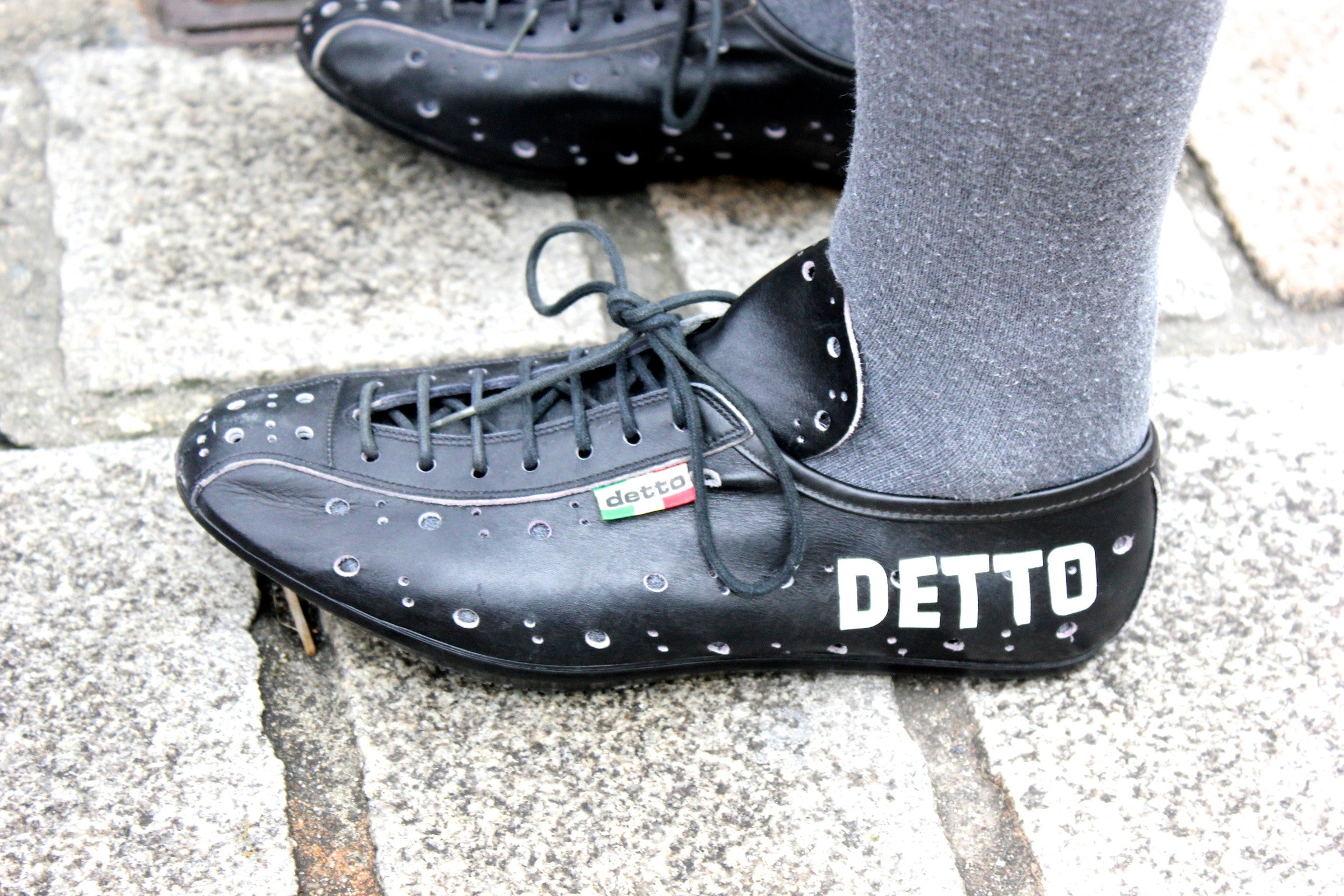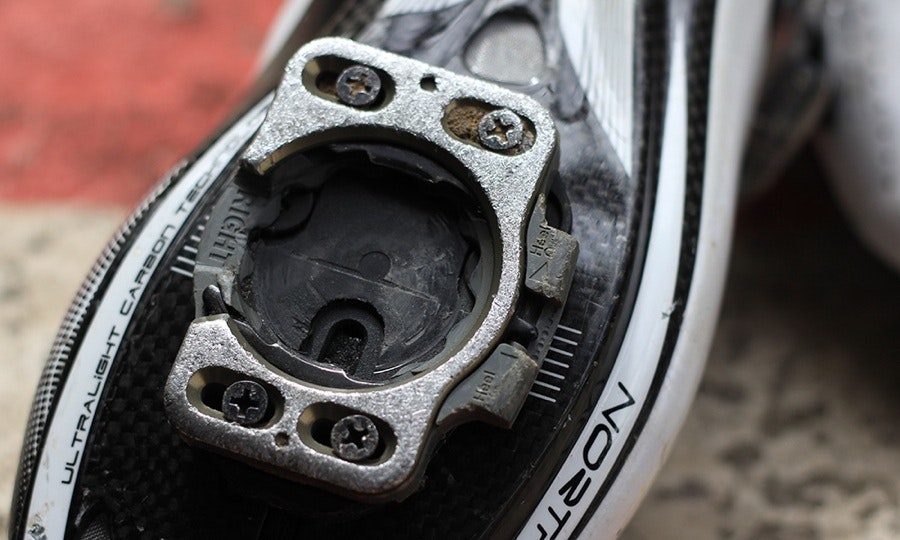New shoes
-

The modern cycling shoe is packed with technology, but fit, support, and comfort remain more important than sole stiffness or the efficiency of the closure mechanism
-

The shoe plays a critical role as biomechanical interface between bicycle and rider
-

Cycling shoes were originally developed from moulds ('lasts') for gentleman's dress shoes, and the very narrow silhouette remains, despite changes in manufacture
-

A shoe that offers a difference in the height of the heel and forefoot can place the foot in a 'planterflex' position, similar to that attained from starting by track sprinters like Usain Bolt
-

A worn and trusted pair of shoes can be comfortable, but if the structure of the upper is worn, they will no longer provide the necessary foot control
-

Different closure mechanisms offer different advantages, both for comfort and use. A BOA system may be the latest, but a lace, Velcro, or ratchet mechanism may be more suitable. pic: Paul Hayes-Watkins
-

Orthotics or insoles/footbeds can help to provide support to the arch of the foot
-

More expensive shoes offer heat mouldable carbon soles, but it's important to understand the purpose of moulding to avoid mirroring imperfections in the feet
-

Carbon soles are now de rigeur on high-end road shoes, but, like frames, different brands offer different levels of compliance and rigidity
-

The importance of cleat position can not be over-stated
New shoes
The cycling shoe is often mentally grouped with clothing when in fact it is a piece of equipment as fundamental to the biomechanical nature of cycling as frame size or handlebar shape.
While the marketing of shoes centres on the stiffness of the sole or the efficiency of the latest closure mechanism, there is no ‘best’ system for every rider, according to our expert witnesses for this buyer’s guide, Julian Wall and James Hewitt of London’s Cyclefit, bike fitters to Trek Factory Racing.
Wall is Cyclefit’s foot expert and has worked extensively with Tour of Flanders winner, Fabian Cancellara, as well as with shoe companies, Lake and Bontrager. Hewitt is a sports scientist with a professional interest in power outputs in cycling, including how power is transmitted through the shoe.
We quizzed the pair on a host of issues from sole off-set to closure mechanisms, from the industry’s obsession with stiffness to the importance of correct cleat position, and gained some interesting responses.
Wall believes that many cycling shoes are overpriced and that the most expensive are not always the most appropriate.
For Hewitt, it is essential to select the appropriate equipment for the rider, rather than try and force the body to accept the product. Set up by an expert, he believes a pair of ‘off the peg’ shoes with ‘off the peg’ insoles and correctly-positioned cleats will meet the needs of most riders.
Read on for our detailed buyer’s guide to cycling shoes.





Share